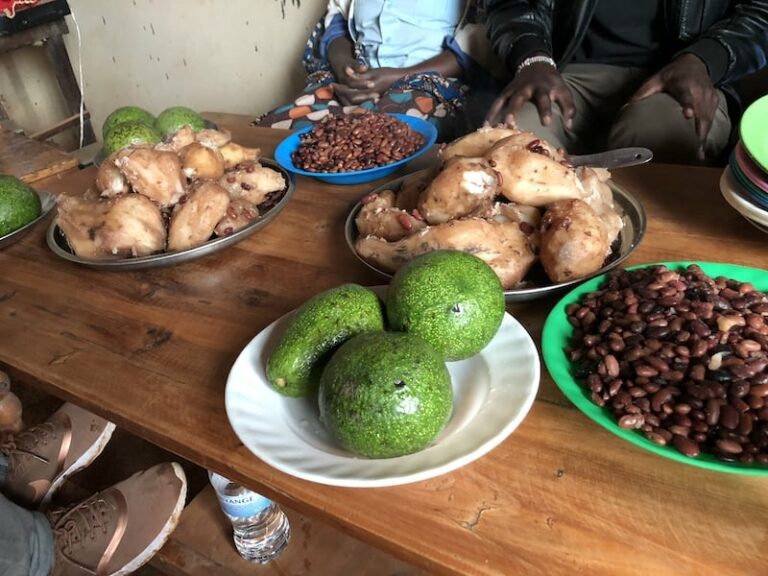Introduction: Dietary restrictions and Rwandan cuisine
In recent years, more and more people have been opting for dietary restrictions due to health or personal reasons. Rwandan cuisine, known for its rich flavors and use of local ingredients, may seem daunting for those with dietary restrictions such as gluten-free or vegetarian diets. However, there are many dishes in Rwandan cuisine that cater to these dietary needs without compromising on taste.
In this article, we explore some gluten-free and vegetarian options in Rwandan cuisine, as well as traditional and fusion dishes that are suitable for diverse palates.
Gluten-free Rwandan dishes: options and recipes
Gluten-free options in Rwandan cuisine are abundant, as many dishes are made with cornmeal, known as “isombe” or “ugali.” Some popular gluten-free dishes include “ibitoke,” a dish made with mashed green bananas, and “isombe,” a dish made with cassava leaves. These dishes can be enjoyed on their own or paired with grilled meat or fish.
For those who enjoy cooking, here is a recipe for “ibitoke:”
- Peel and chop 4 to 6 green bananas.
- Boil the chopped green bananas in salted water until they are soft and tender.
- Drain the water and mash the bananas.
- Serve hot as a side dish or main meal.
Vegetarian Rwandan dishes: a guide to plant-based dining
Vegetarian options in Rwandan cuisine are also readily available. “Ubuki,” a dish made with beans, is a popular protein-rich vegetarian dish. “Umutsima,” a dish made with cassava, sweet potato, and cornmeal, is also a vegetarian option that can be enjoyed as a main meal or side dish.
For a delicious vegetarian recipe, try making “Ubuki:”
- Soak 2 cups of beans overnight.
- Drain the water and cook the beans in a pot with enough water to cover them.
- Add chopped onions, tomatoes, salt, and pepper to taste.
- Cook until the beans are soft and tender.
- Serve hot with “isombe” or “ibitoke.”
Traditional Rwandan cuisine: ingredients and preparation methods
Traditional Rwandan cuisine heavily relies on locally sourced ingredients. Some common ingredients include beans, peas, cassava, sweet potato, corn, and plantains. Preparation methods include boiling, steaming, or grilling. Meat and fish are also popular protein sources, usually grilled or stewed with spices and vegetables.
Rwandan fusion cuisine: innovative dishes for diverse palates
Rwandan fusion cuisine blends traditional ingredients with international flavors to create innovative dishes for diverse palates. One such dish is “brochettes,” skewers of grilled meat or fish marinated in a spicy sauce. Another popular fusion dish is “pilau,” a rice dish seasoned with spices, vegetables, and meat.
Conclusion: Exploring Rwandan cuisine with dietary restrictions
Rwandan cuisine offers a variety of dishes that cater to different dietary needs without compromising on taste. From gluten-free options like “ibitoke” and “isombe” to vegetarian options like “Ubuki” and “Umutsima,” there is something for everyone in Rwandan cuisine. Traditional dishes like “brochettes” and “pilau” showcase the rich flavors of the local ingredients, while fusion dishes bring international flavors to the table. So go ahead and explore the flavors of Rwandan cuisine, no matter what your dietary restrictions may be.

